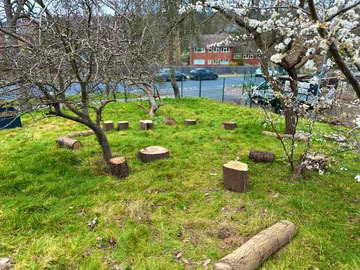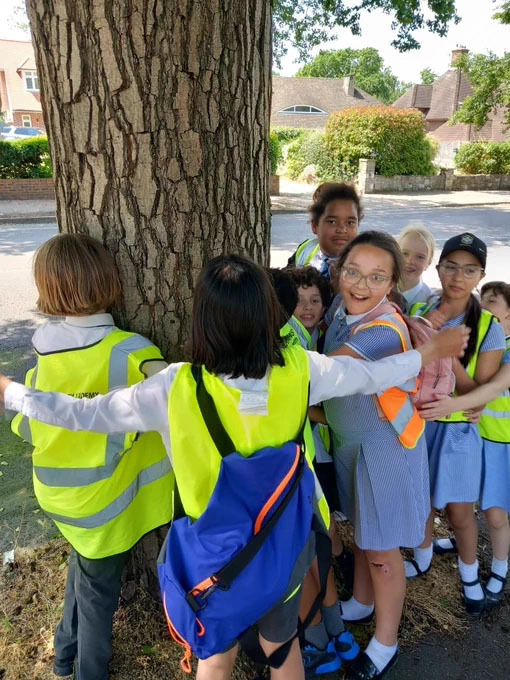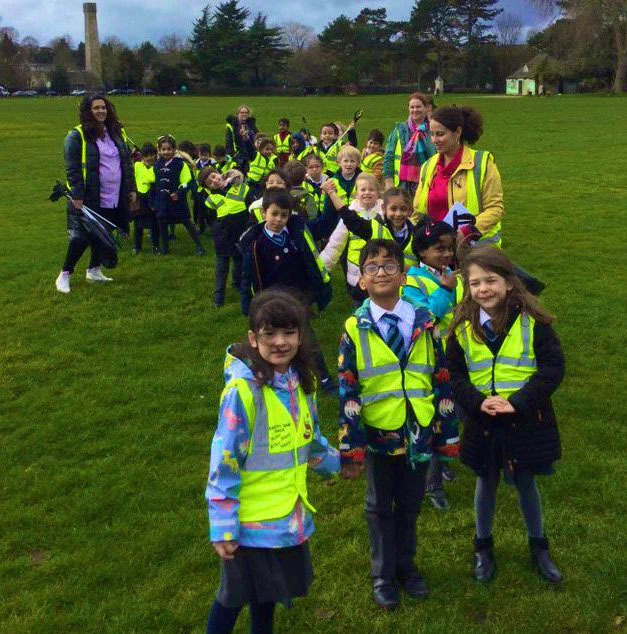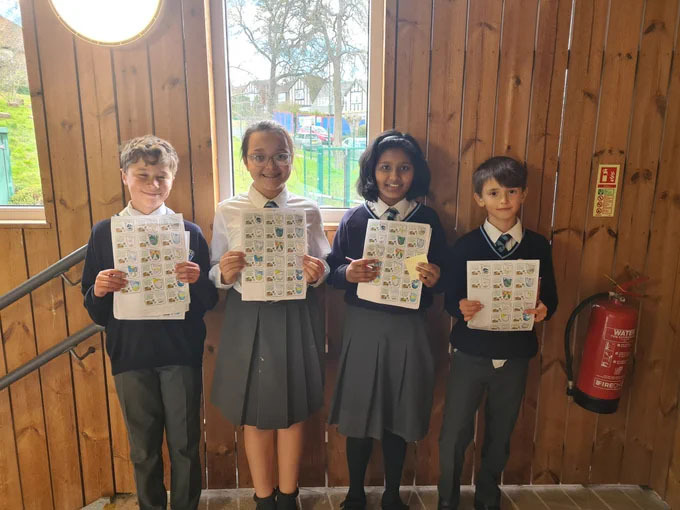Green Schools Project: Student-led sustainability
Many schools are finding ways to incorporate sustainability and green issues into their curriculum.
The Green Schools Project recognises this, and is changing the ways schools respond to the climate crisis. They give teachers and young people the tools they need to tackle the climate crisis in schools, their communities, and throughout their lives.
We spoke to Rohini Carroll, a Class Teacher at Harris Primary Academy Shortlands about the work they have been doing with the Green Schools Project.

You've just done your first year of the Green Schools Project. How was the experience?
It’s been a really good project to roll out and I found it especially useful because I was new to the school when it was introduced. We’ve had reflections on the scheme, and we’ll do things a little differently this year to maximise the impact. But it had a huge, positive effect on the school.
The training they provide is very useful. We opted for the free programme (there is also a paid option, which means they come in person to support you with the delivery of the programme and do some staff training face-to-face as well). With the free option, you do the training online with lots of other schools at the same stage in the process. This is great because you can discuss with other people from all over the UK how they’re approaching the challenge and what obstacles they’re coming up against. Somebody in Scotland was explaining how their school’s energy is especially challenging because they’re off-grid. So it’s interesting to have that to compare experiences.
They conduct the training once per term for those of us on the free option. Because it was our first year (we started it in October), they reached out to us. There is also an option to begin in January.
Can you describe the process after the training?
We provided the Green Schools Project with our carbon data. We then put them in touch with our Business Manager and she gave them information about our printing, energy use, catering, etc. Subsequently, they provided us with a training program specifically tailored to our school and our requirements.
I was the one to do the initial training, and we used our eco-warriors as the vehicle to drive it out. The eco-warriors are children who are elected by their classmates and act as their representatives. We are a 2-form entry school, so we took 2 children from each year group from Year 4 upwards. You wouldn’t go lower than Year 3, because the material is pitched quite high.
It’s really nice because you sometimes create student leadership groups and then you’re scrabbling around for roles for them to do, but this was great because the project gave them really clear, well-designed jobs with clear curriculum relevancy.

Can you say some more about what the eco-warriors did?
You get a log-in and you and the children get an audit to fill in. It’s about what the school is doing, but also the children’s awareness of climate change. They also do an end-of-program audit. The eco-warriors loved doing something so official, that raised the profile of their roles. The initial sessions allow children to get familiar with what the programme is. They then conducted assemblies to make the rest of the year group aware of what they were doing.
The session resources are really good. The initial sessions provide background. We did these as half-hour sessions, but they could be used for 45 minutes or even up to an hour. They guide learners through climate change, what it is and its effects around the world.
It also looked at different inspirational change-makers around the world, young people in the Global South who do not appear in the mainstream media, but who are doing very important work with their local community. There was a case study from the Solomon Islands as well and the impact of flooding. That diversity was a real plus point.
When it comes to your own project as a school, that can be anything you want it to be. So we had the eco-warriors do the Big Walk with Sustrans. The children designed stickers for people who had come to school in a sustainable way. We also tied it in with the activities we were doing for 30 Days Wild.
The children are responsible for a lot of the actions. We now have little green and orange and red stickers on our light switches to show people clearly what they can and cannot turn off and when. The eco-warriors were responsible for leading that.
Were there many ways you could tie what you were doing into the existing curriculum?
There definitely were links. For example, the story time book we had with the classes in Spring One had sustainability as its central theme. We wove what we were doing into Geography as well, because they did Fieldwork Fortnight and we tried to ensure that the eco-focus there was strong.
The class teachers were very good at drawing out the parallels. It was great to be doing the Energy Sparks programme alongside the Green Schools Project as well, because many of our actions could be submitted as evidence for Energy Sparks, and enabled us to move forward on the leaderboard.

You are doing the programme again. What things do you think you might change this year?
I think we’ll be a bit more ambitious this year in terms of getting the wider school community involved. I’d like us to really put our individual stamp on the programme. When we meet with the eco-warriors in the first couple of weeks, I think we’ll try and be led by what they pull out as priorities. We’re very lucky to have a very active PTA as well. We’ll try and make sure that the projects we decide on allow plenty of participation and support from them as well.
What were your most significant obstacles?
It’s easy to get overwhelmed at particular times of year with other pressing priorities, such as SATs, and community events and trips in the summer. The Green School Project was really good at sending us gentle nudges when we didn’t, for example, download the term’s resources. They asked us if we needed some more support, and that was really helpful.

Climate change is potentially quite a traumatic subject, especially for children. Did you have ways of dealing with that?
Yes, 100%. So we actually had this conversation with the children.
Everything in the programme, from the sessions to the resources, is pitched in a hopeful sort of way. In terms of the change makers and the case studies it aims to inspire, as opposed to creating a sense of doom and gloom. But we were very impressed by the maturity of the eco-warriors when they were thinking about how to approach this. In the first assembly they did for the project, they were initially going to declare a climate emergency. But, as a group, they decided this was too traumatic a way to frame it for the other children, and they decided it as a group to rephrase it to Call To Action.
We were proud of them for showing that sort of perceptiveness and maturity.
What did the students enjoy most?
I think they really enjoyed experiencing student leadership. Mr Hollis, our Principal, made the eco-warriors fantastic little lanyards. And we had a display in a prominent place in the entry hall as well that shows all of the projects that they've done throughout the year and the impact they've had. They had their own profiles that said why they've chosen to be eco-warriors. And the messaging to the rest of the school was very much that the eco-warriors are your representatives. I think they just enjoyed having that responsibility, visibility, and pride in what they were doing.
Connect with us…
and stay up to date with all things Harris Careers!




